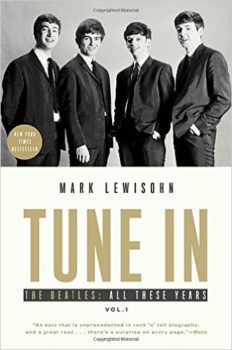


As told in numerous bios, magazines and documentaries, it plays like a scene from a Hollywood weepie. For example, the moment in 1946 when the infant John Lennon was forced to choose between his warring parents, the heart-breaking tug of love which – legend has it – scarred him forever. But, while there is no doubt it brings us closer to the truth and has thrown up a wealth of important information people didn’t even know existed, I can’t subscribe to the same feeling of certainty Lewisohn attributes to his re-telling of some events. And when the book came to be published, it’s ‘myth-busting’ credentials formed a key part of its marketing strategy, with its author credited as setting the record straight and correcting falsehoods. In the course of his unparalleled research and forensic analysis for the book, Lewisohn came to question and, ultimately, revise some aspects of the band’s story which had been routinely accepted as fact down the years. So here are a few nits I couldn’t help picking while reading Tune In.

It’s a little like Revolver having ‘Yellow Submarine’ on it – it’s still a majestic album, but not quite a flawless one (in my opinion). But Lewisohn sets such high standards, you can’t help but notice if he falls short once in a while or leaves some questions unanswered. And, as it is, they don’t cast any real blemish over the regular, 840-page version. It may be that some of them are addressed in the extended (double-length) ‘author’s cut’ of the book. But is it perfect? It comes staggeringly close but, no, I do have a handful of gripes with it.

It richly deserves all the bouquets and plaudits which have come its way, and I have no doubt it will come to be seen as the ‘Bible’ on the band (not that I am comparing The Beatles to Jesus Christ as a person or God as a thing in any way whatsoever, you understand). Last time out I waxed lyrical about Tune In, the first volume of Mark Lewisohn’s mammoth Beatles biography, which was published in 2013.


 0 kommentar(er)
0 kommentar(er)
